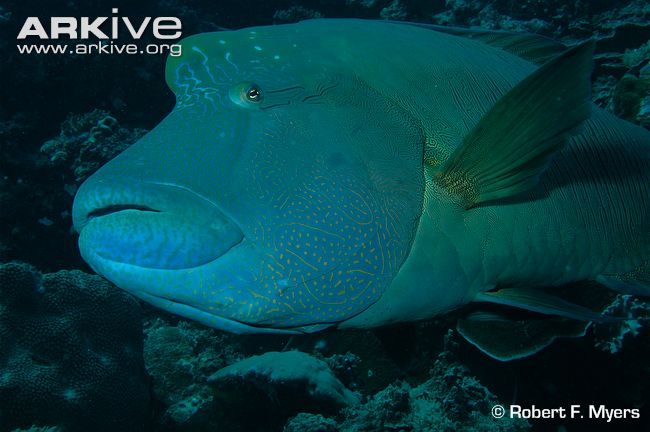 Classification
Classification
Domain: Eukarya
Kingdom: Animalia
Phylum: Chordata
Class: Actinopterygii
Order: Perciformes
Family:
Labridae
Genus: Cheilinus
Species: undulatus
PHYLOGENETIC TREES:
To see the molecular classification of the Cheilinus
genus, click
here.
This shows how the various species are related using
Tmo-4C4 gene sequence. This tree was created by Olivia
Feagles and based upon information obtained from the
primary resource created by Alfaro and Westneat (2005).
To see the morphological classification of the Labridae
family, click
here.
This shows the relationships physically among similar
species. This tree was created by Madison Geliche
and the information was gathered from a primary research
article specifically describing the physical
characteristics among many different labrid species
(Westneat 1993).
CLASSIFICATION EXPLANATIONS:
DOMAIN: This organism belongs to the
domain Eukarya because it is eukaryotic and contains
membrane bound organelles. Also, all of the cells
within this organism contains a nucleus (Cain et al. 2008).
KINGDOM: The Napoleon Wrasse is a
member of the kingdom Animalia because it is
multicellular, it lacks a cell wall, and it is a
heterotrophic organism (Cain et al. 2008).
PHYLUM: This fish is part of the phylum
Chordata because it contains features that are unique to
just chordates. These features include: a
notochord, a dorsal nerve cord, pharyngeal slits, and a
post-anal tail (Myers 2001).
CLASS: The Napoleon Wrasse is a
ray-fined fish which is a characteristic of this class
(Jonna 2004).
ORDER: One reason the Napoleon Wrasse
belongs to the order Perciformes is because it has a
perch-like body and has dorsal, anal, and pelvic fins.
Other characteristics that the Napoleon Wrasse has that
is shared among other species in the Perciformes are
specific types of rays, bones, and gills (Bray and Gomon
2011).
FAMILY: One important characteristic of
the Labridae family is being a protogynous
hermaphrodite. Also, those part of this family
have large teeth, specialized scales and a large dorsal
fin. Other characteristics that are shared among
the Labridae fish are colorful bodies and thick
lips (Bray 2012).
DEFINITION:
Here is the break down of Cheilinus undulatus:
In Greek, the world "cheilos" means lip. This is
appropriately used in the scientific name because this
fish is commonly known for its extremely large lips (FishBase
2012).
In Latin, the word "undulatus" translates to wavy or
undulated. This is appropriately used because of the
wavy patterns on the sides of the organism (Word Sense).
COMMON NAMES:
The more common names for the Cheilinus undulatus are
derived from the notable hump on the foreheads of larger
individuals, their giant body size, and the delicate
markings around the eyes (Sadovy et al. 2003). Some of
the common names include Humphead Wrasse, Napoleon
Wrasse, and Maori Wrasse. "Napoleon" is a fitting
common name because the hump on the head of the Wrasse
represents the hat of Napoleon Bonaparte, a French
emperor. Also, "Maori" is a appropriate because the
patterns on the body of the Wrasse represents the face
and body paintings of Maori people in New Zealand!
Continue to
Habitat to see where this organism spends its time!
Check out our
References!
Back to
Homepage